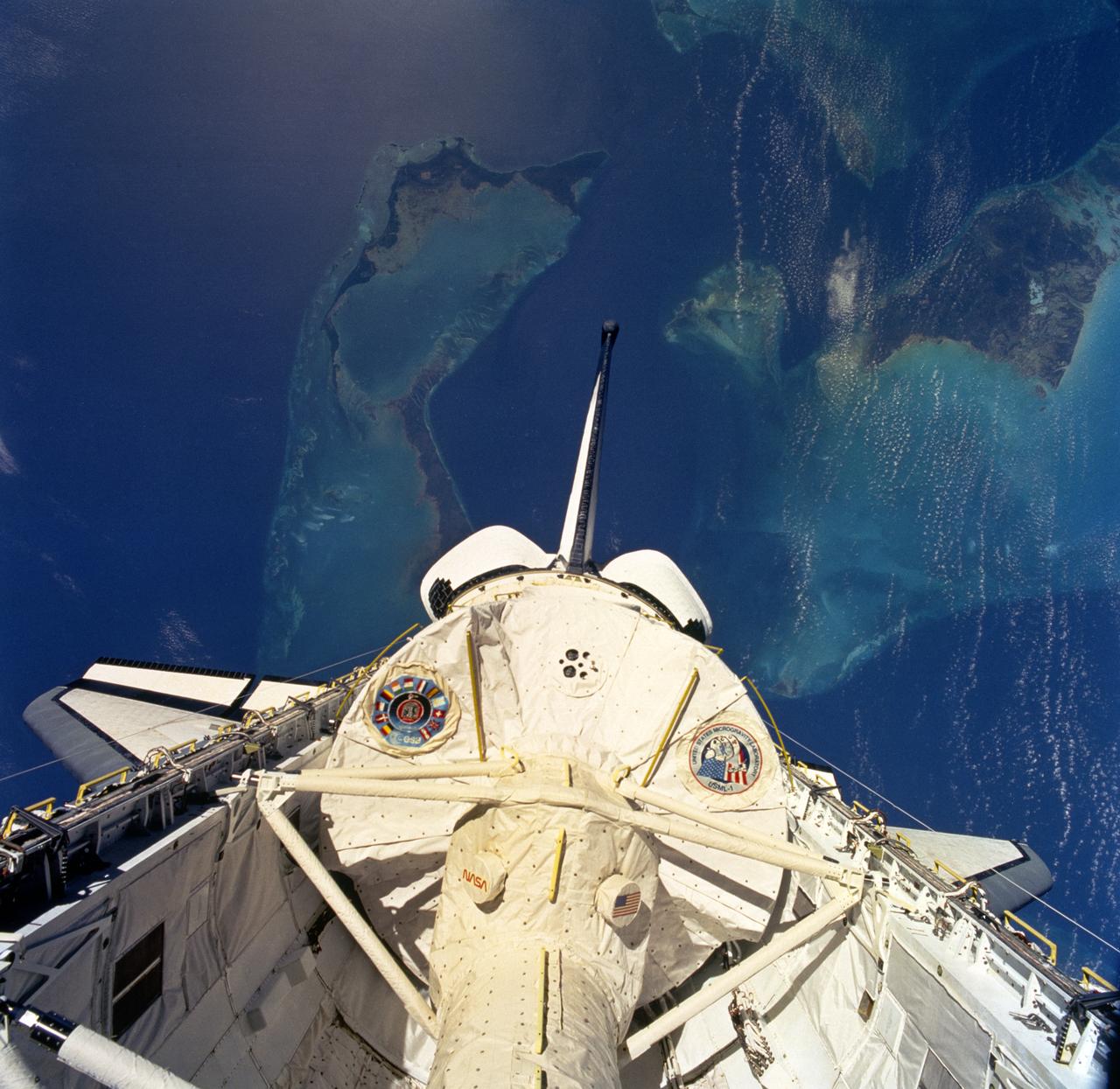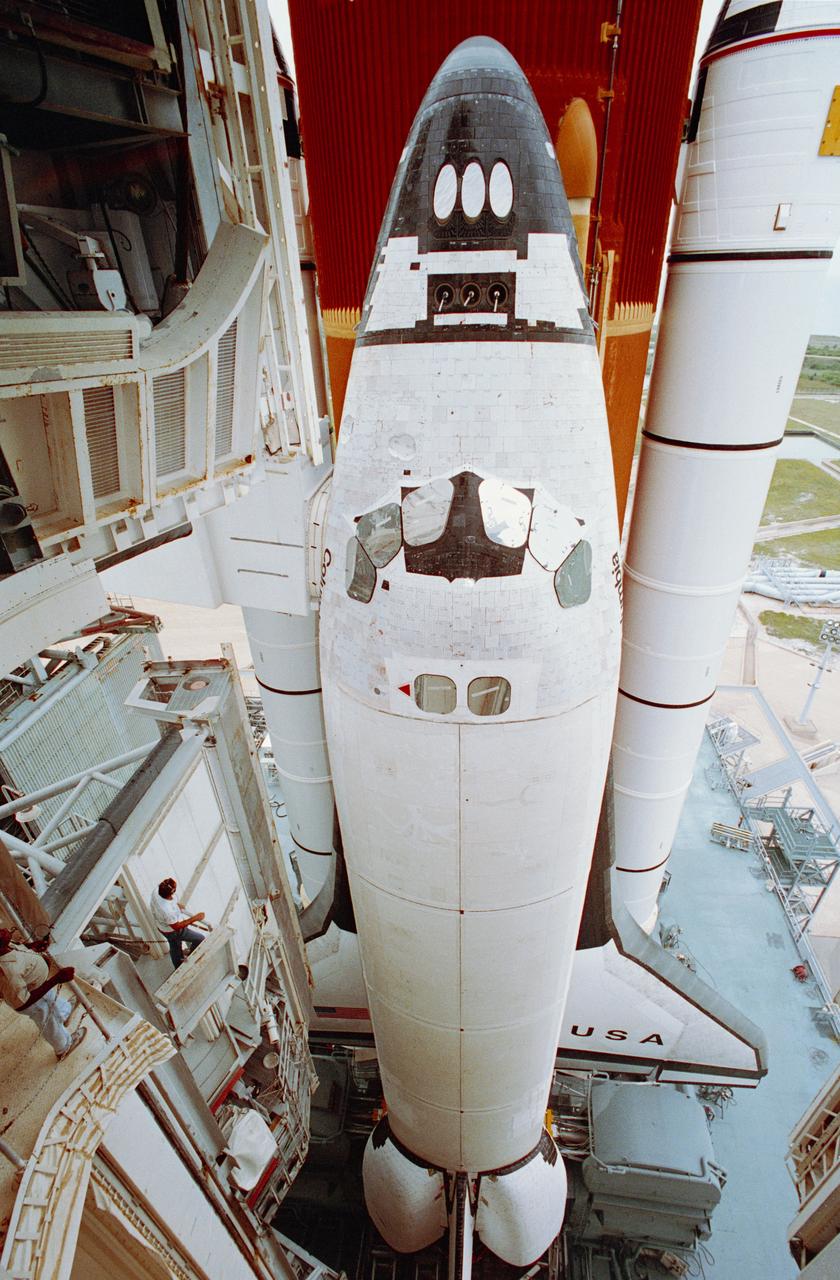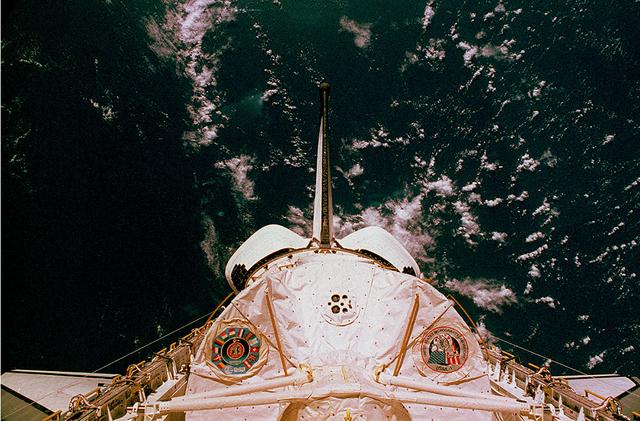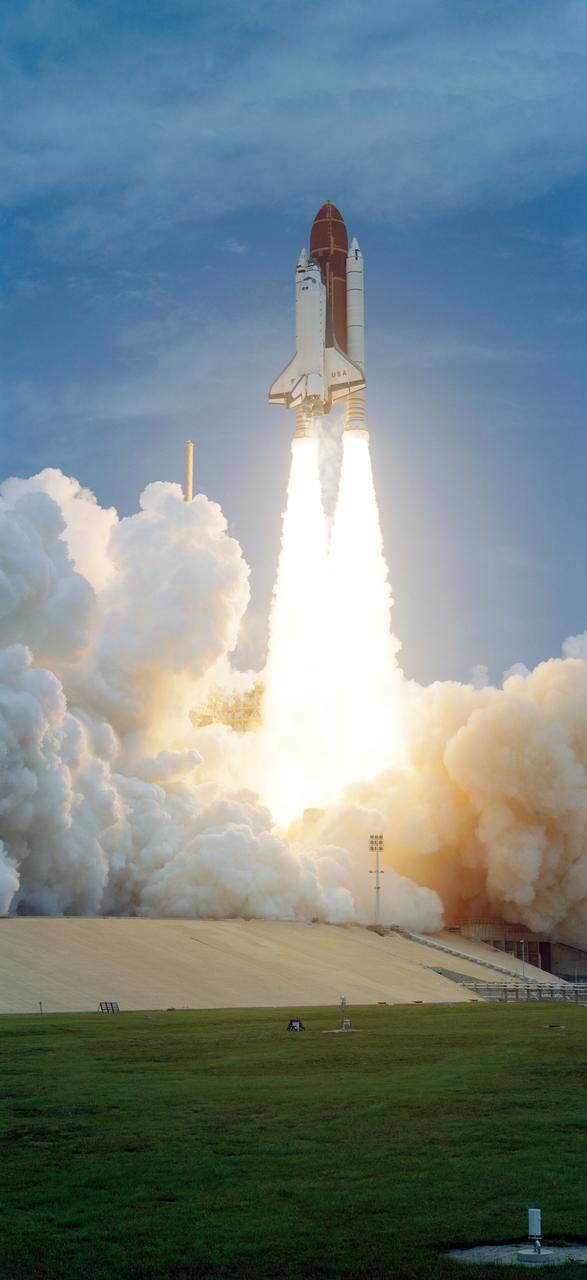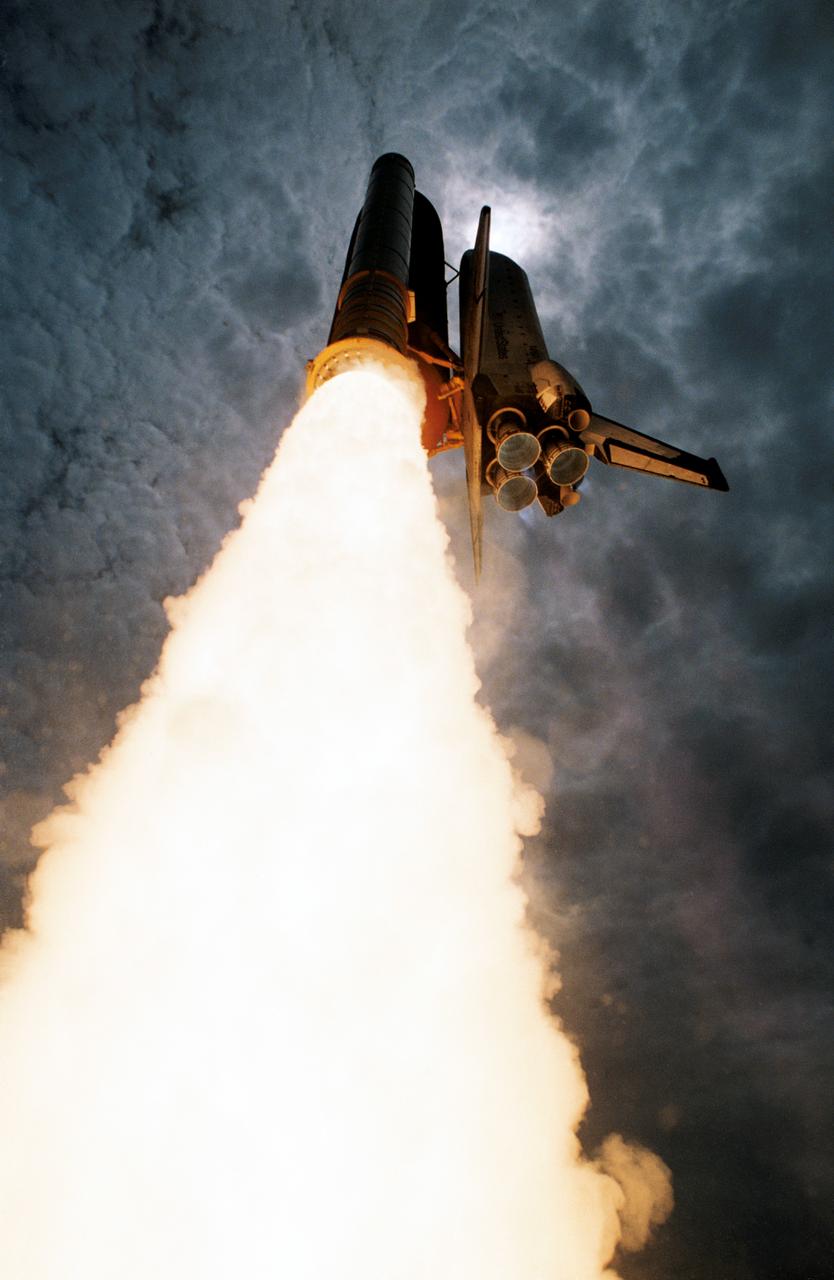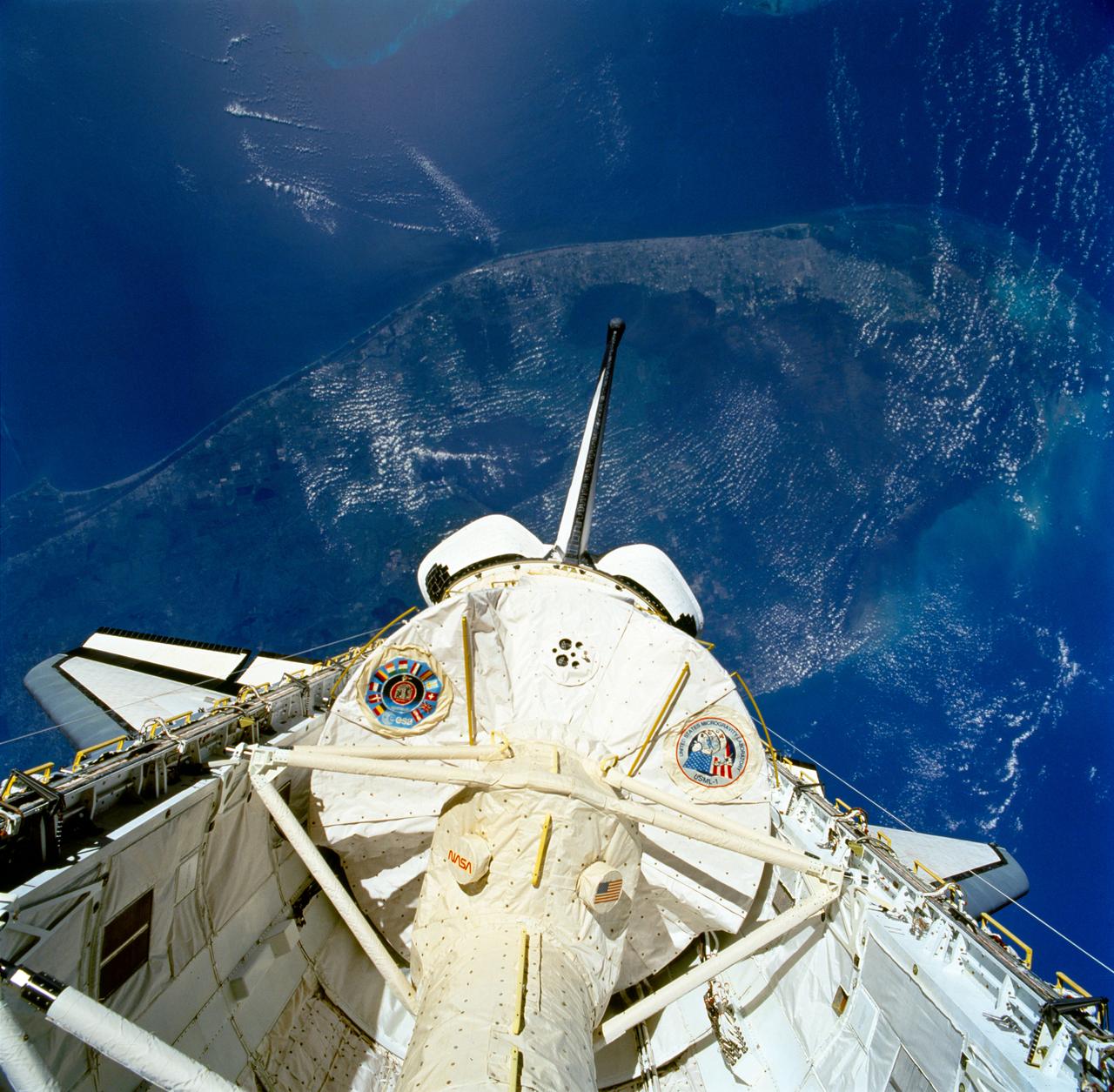STS-50 Fact Sheet
By Cliff Lethbridge

STS-50 — Columbia
48th Space Shuttle Mission
12th Flight of Columbia
Crew:
Richard N. Richards, Commander
Kenneth D. Bowersox, Pilot
Bonnie J. Dunbar, Payload Commander
Carl J. Meade, Mission Specialist
Ellen S. Baker, Mission Specialist
Lawrence J. DeLucas, Payload Specialist
Eugene H. Trinh, Payload Specialist
Orbiter Preparations:
Tow to Orbiter Processing Facility – February 10, 1992
Rollover to Vehicle Assembly Building – May 29, 1992
Rollout to Launch Pad 39A – June 3, 1992
Launch:
June 25, 1992 – 12:12:23 p.m. EDT. Launch was delayed five minutes in order to wait for improved weather conditions at the launch site.
Landing:
July 9, 1992 – 7:42:27 a.m. EDT at Runway 33, Kennedy Space Center. Rollout distance was 10,674 feet. Rollout time was 59 seconds. Mission duration was 13 days, 19 hours, 30 minutes, 4 seconds. Landing occurred during the 221st orbit.
Landing was delayed one day due to poor weather at the Edwards Air Force Base primary landing site, which also resulted in a diverted landing at KSC a day later. A drag chute was once again deployed in test mode following nosegear touchdown.
Mission Summary:
This was the first use of a Shuttle with Extended Duration Orbiter Hardware, which was installed during extensive modifications to Columbia at Rockwell’s California manufacturing plant.
The primary payload was the U.S. Microgravity Laboratory-1 (USML-1), making its first flight. USML-1 was housed in the Shuttle’s pressurized Spacelab module, and facilitated a variety of space science, medical and materials processing science experiments.
Secondary payloads included Investigations Into Polymer Membrane Processing (IPMP), Shuttle Amateur Radio Experiment II (SAREX II) and Ultraviolet Plume Instrument (UVPI).
SELECTED NASA PHOTOS FROM STS-50


